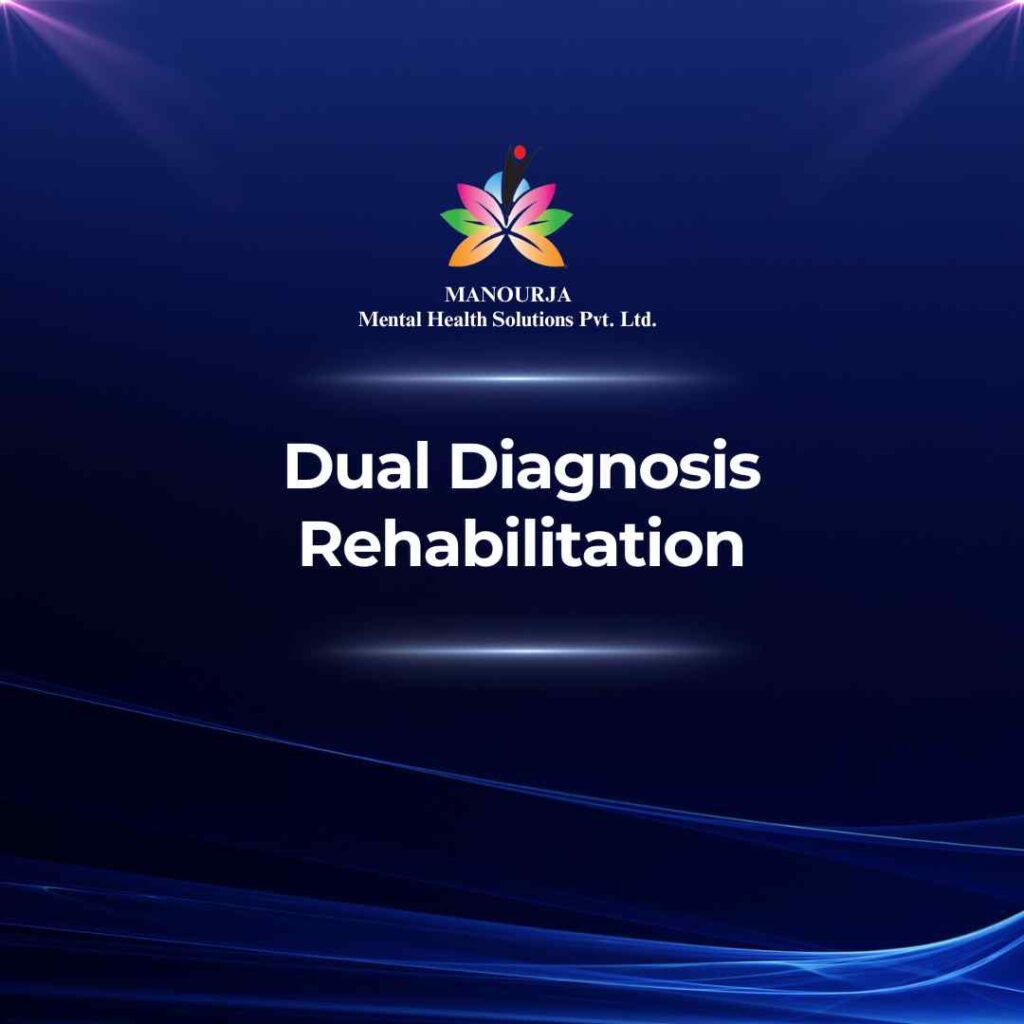Dual Diagnosis Rehabilitation

Dual Diagnosis refers to the co-occurrence of mental health disorders and substance use disorders. It presents unique challenges because each disorder can exacerbate the symptoms and complications of the other, complicating the treatment process and often requiring specialized care.
Signs and Symptoms of Dual Diagnosis
- Simultaneous Symptoms: Manifestations of both mental illness (such as depression, anxiety, mood swings, paranoia) and substance abuse (including increased tolerance, withdrawal symptoms, using substances to cope with emotional distress).
- Increased Severity of Symptoms: More severe and frequent manifestations of symptoms compared to those suffering from either a mental health disorder or substance use disorder alone.
- Impaired Functioning: Noticeable difficulties in managing daily activities, maintaining employment, relationships, and social responsibilities.
- Increased Health Risks: Greater susceptibility to overdose, infectious diseases, and other health complications.
- Relapse and Recovery Issues: Higher rates of relapse, hospitalization, and challenges in achieving long-term recovery.
Indicators for Outpatient Psychosocial Rehabilitation (OPD)
- Mild to Moderate Severity: Where symptoms are present but do not critically impair the individual’s ability to function.
- Strong Support Systems: Availability of a robust support network that can offer stability and encouragement, enhancing outpatient treatment efficacy.
- Commitment and Compliance: High motivation and readiness to engage in treatment with the capability to adhere to outpatient program schedules.
Indicators for Inpatient Psychosocial Rehabilitation (IPD)
- Severe Symptoms or Instability: Severe impairment in mental and physical health requiring intensive care and structured environment.
- High Risk of Harm: Risks such as suicidal ideation, severe withdrawal symptoms, or a high potential for overdose.
- Lack of Supportive Environment: Inadequate support systems at home, or living conditions that may trigger substance use or exacerbate mental health symptoms.
- Previous Treatment Failures: Ineffectiveness of outpatient treatments or repeated relapses.
Factors Influencing the Decision
- Severity of Both Disorders: The more intense and acute the symptoms, the more likely inpatient care might be needed.
- Risk Factors: Immediate health risks and safety concerns may necessitate more controlled care settings.
- Support and Environment: Availability of a supportive living situation can greatly influence the choice of treatment settings.
How Psychosocial Rehabilitation Aids in Treating Dual Diagnosis
Effective treatment for dual diagnosis involves integrated approaches that address both the mental health disorder and the substance use disorder simultaneously to reduce symptoms and improve overall functioning.
Techniques and Approaches Utilized at MANOURJA
- Integrated Treatment: Coordinated approach to treat both mental health and substance use disorders together.
- Cognitive Behavioral Therapy (CBT): Helps modify negative thinking and behaviors related to both substance use and other mental health symptoms.
- Medication-Assisted Treatment (MAT): Uses medications to manage withdrawal symptoms, cravings, and to treat the mental health disorder.
- Motivational Interviewing (MI): Enhances motivation to stick to treatment plans and abstain from substance use.
- Group Therapy and Peer Support: Facilitates sharing experiences and strategies for coping with dual diagnosis.
- Family Therapy: Engages family members in the recovery process, improving communication and support within the family system.
Steps Followed at MANOURJA for Rehabilitation
- Comprehensive Assessment: Detailed evaluation of mental health and substance use history, current status, and needs.
- Development of a Personalized Treatment Plan: Crafting a tailored plan that addresses specific diagnoses, symptoms, and personal goals.
- Implementation of Therapeutic Interventions: Scheduled sessions involving psychotherapy, support groups, and possibly pharmacotherapy.
- Ongoing Monitoring and Adjustment: Regular review of treatment effectiveness, making necessary adjustments to maximize recovery progress.
- Aftercare Planning: Structuring a continuation of care post-rehabilitation to prevent relapse and support long-term recovery.
“Every day is a new opportunity to rebuild your life and rediscover your strength.”
